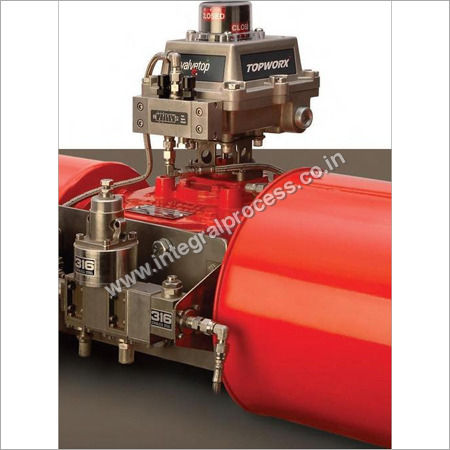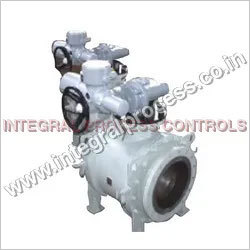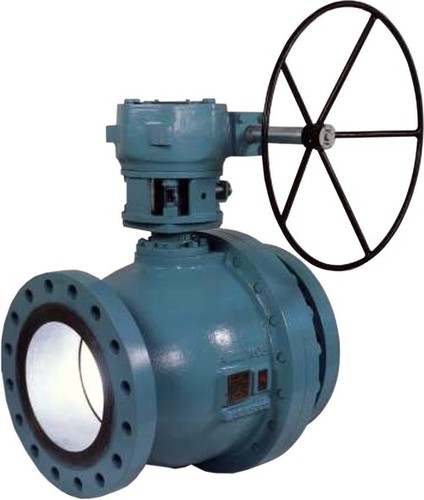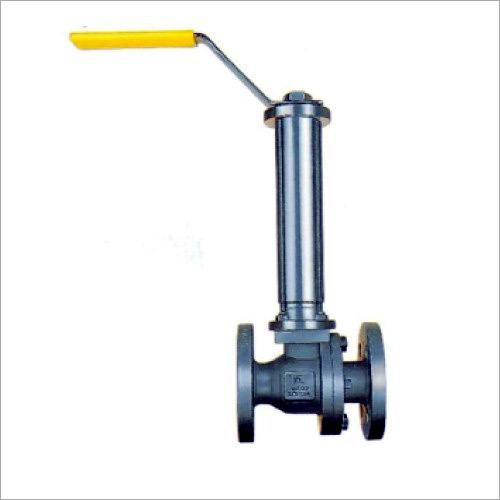Emergency Shutdown Valves
Emergency Shutdown Valves Specification
- Structure
- Flanged / Welded
- Material
- Stainless Steel
- Power
- Pneumatic / Electric
- Pressure
- Up to 150 bar
- Media
- Oil, Gas, Water
- Port Size
- 1/2 to 24
- Surface
- Polished / Painted
- Shape
- Round / Cylindrical
Emergency Shutdown Valves Trade Information
- Minimum Order Quantity
- 1 Unit
- Supply Ability
- 3 Units, , nos Per Day
- Delivery Time
- 2-4 Week
About Emergency Shutdown Valves
Relying on our enormous industry knowledge, we are manufacturing and supplying wide range of Emergency Shut Down Valves. Suitable for regulating high flow applications these valves are highly demanded in various industries. The offered valves are manufactured at our well-equipped manufacturing unit under the strict observation of our experienced professionals by utilizing optimum quality of raw materials and latest machinery. These Emergency Shut Down Valves can be availed from us at reasonable prices.
Emergency Shutdown Valves Advantages:
- Local operation
- Low pilot closing
- Partial Stroking System
- Air Tank for actuator operation in case of pneumatic supply failure
- Gas or Nitrogen as actuating medium
- Manual override (Declutchable Gear Box, Jack Screw or Hydraulic Type) for emergency operation
- High pilot closing
- Line break (Mechanical or Electronic type) Systems
- Hi Lo pilot closing
- Fire safe execution (valve, actuator & control accessories) to meet the hydro carbon fire curve requirements
Emergency Shutdown Valves Specification:
| Material | SS/ Carbon Steel |
| Brand | IPC |
| Type | Shut Down Valve |
Reliable Safety Shutoff for Critical Applications
Designed to safeguard assets and personnel, our Emergency Shutdown Valves instantly seal off pipelines in case of emergencies. With spring return and double-acting actuator options, these valves reliably achieve full shutoff in less than a second, minimizing risk during hazardous events across oil, gas, and water industries.
Versatility in Media, Pressure, and Mounting
Suited for a broad range of mediaoil, gas, and waterthese ESDVs handle pressures up to 150 bar and port sizes from 1/2 to 24 inches. Choose between vertical or horizontal mounting, and various shapes and structures, to fit any installation requirement. Both flanged and welded structures are available for seamless integration.
Quality Construction and Easy Maintenance
Fabricated from corrosion-resistant stainless steel and offered with either PTFE or metal seats, the valves undergo thorough hydrostatic and pneumatic testing. Accessible design simplifies maintenance, enabling swift repairs and lower operational costs, while polished or painted surfaces ensure lasting appearance and integrity.
FAQs of Emergency Shutdown Valves:
Q: How does the emergency shutdown valve achieve rapid pipeline isolation?
A: The valve utilizes either spring return or double-acting actuators, operated pneumatically or electrically, to initiate complete shutoff in under one second. This swift response is crucial for safety during emergency situations.Q: What seat materials are available, and how do they impact valve performance?
A: You can select between PTFE or metal seat options. PTFE provides excellent chemical resistance and is ideal for tight sealing, while metal seats withstand higher temperatures and abrasive conditions, offering greater durability in demanding environments.Q: When should I choose a flanged versus a screwed end connection?
A: Flanged connections are recommended for larger-diameter or high-pressure applications due to their robust sealing and ease of maintenance. Screwed connections suit smaller pipelines or systems requiring quicker installation.Q: Where can these valves be installed, and what are the mounting options?
A: These shutdown valves support both vertical and horizontal mounting orientations, making them versatile for installation in diverse settings such as refineries, processing plants, or distribution points.Q: What is the process for testing and verifying valve quality before deployment?
A: Each valve is subject to thorough hydrostatic and pneumatic testing in accordance with API, ANSI, and DIN standards. This comprehensive process ensures that the equipment meets stringent safety, tightness, and durability criteria.Q: How do low maintenance and easy access for repairs benefit end users?
A: Low-maintenance design and accessible construction mean routine servicing or repairs can be performed swiftly, minimizing downtime and reducing overall maintenance costs throughout the valves lifecycle.Q: What are the advantages of using these ESDVs in oil, gas, or water systems?
A: These valves deliver bubble-tight Class VI sealing, rapid actuation, robust material construction, and adaptability to various pressure and media types, enhancing operational safety and reliability in critical infrastructure.
Tell us about your requirement

Price:
Quantity
Select Unit
- 50
- 100
- 200
- 250
- 500
- 1000+
Additional detail
Mobile number
Email
 Send Inquiry
Send Inquiry






 Send Inquiry
Send Inquiry Send SMS
Send SMS